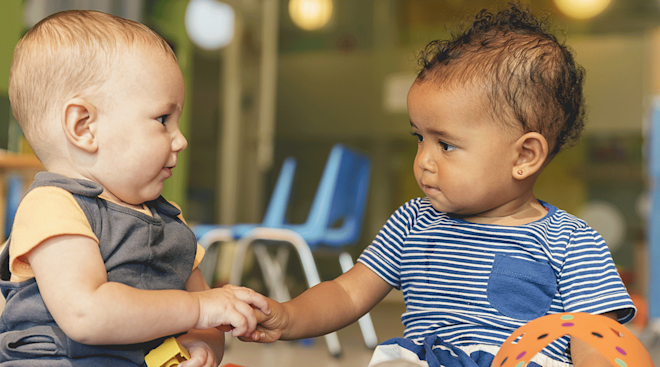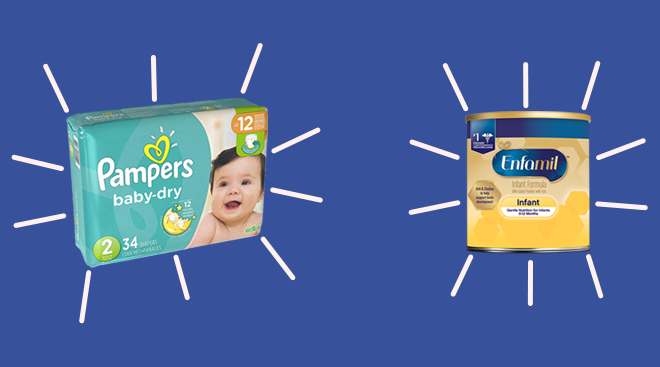Child Life Insurance: Is It Worth It?
As a parent, you want to do everything you can to protect baby’s health and set them up for future success, both developmentally and financially. One option you’ll likely hear about shortly after baby arrives—bundled with formula samples and paperwork from your pediatrician’s office—is child life insurance. Depending on your family’s life and financial goals, a baby life insurance policy can provide reassurance for your family and an upside for baby’s future, but it may not be the right choice for everyone. Here’s what new parents need to know about getting life insurance for kids.
You may already have (or be familiar with) life insurance for adults—it’s a contract between you and an insurance company that guarantees a payout of money (known as a “death benefit”) to your beneficiaries if you were to pass away. Child life insurance, which parents buy on behalf of one or more of their kids, serves a similar purpose: It covers the expenses associated with the passing of a child, like funeral costs or lost wages due to taking time off to grieve.
It can also ensure that your kids will have affordable, continual coverage as they grow up. “Accidents happen and health issues come up, which may make a child uninsurable in the future,” says Chris Abrams, founder of Abrams Insurance Solutions. “Starting a policy when your child is young and healthy will guarantee they have some life insurance when they’re older and have a family of their own.”
Like most life insurance for adults, life insurance for kids is generally offered in two ways: Whole life—a type of permanent life insurance which, like it sounds, is designed to last a lifetime—and as a child rider to term life insurance, which is added to a parent’s existing term life insurance plan and offers coverage for a set number of years.
- Whole life insurance for kids. Depending on the plan you choose, it will provide coverage (generally up to $150,000) for as long as monthly premiums are paid. A portion of this may develop cash value which can be used when the child comes of age—anywhere from age 18 to 25, depending on the insurer. At that point, they’ll also have the choice to extend coverage by continuing to pay the same premium or increase it for a larger life insurance policy.
- Child rider to term life insurance. Many financial advisers recommend that new parents looking to purchase child life insurance go with this type of policy. Term life insurance isn’t available as a stand-alone product for children, but this add-on rider to your own policy is an affordable option since you’re only paying through the adolescent or early adult years. Once a child reaches the end of the term, “you can usually convert a rider to around five times the amount of permanent life insurance,” Abrams says. ”So if you have a $25,000 rider, you can get around $125,000 of permanent coverage.”
There are many reasons to consider buying life insurance for kids, and you have to weigh the pros and cons to make sure your family will benefit from the type of protection and investment trade-offs they offer. The biggest benefit of buying child life insurance for your baby is the security of knowing they will always have coverage, even if they develop a medical problem down the line. “If your family has a strong medical history of really severe illnesses that would make a child uninsurable, the peace of mind that comes with whole life insurance is worth something,” says Natalie Taylor, a certified financial planner and behavioral financial adviser. “Think about what your goals are and whether life insurance checks the boxes you want checked.”
Pros to buying child life insurance:
- It’s affordable. Adding a child rider to your own term life insurance, which generally covers all current and future kids in a family from the get-go, is relatively inexpensive. Depending on the policy, a typical range may be $5 to $12 a month (in addition to your own premium).
- You can ensure they’ll be insured as adults. Parents can add a guaranteed insurability rider for their child onto a whole life plan, which allows the child to purchase additional insurance in the future without a medical screening. Similarly, child term riders may be converted to a permanent insurance policy in the future without a screening.
- Whole life insurance for kids accrues cash over time. An additional feature of many whole life policies is that they develop cash value which can be used for your kids, allowing them money in the future to use for college or other big-ticket expenses. The interest rates are set by your insurance provider, and any cash value growth is tax-deferred.
Cons to buying child life insurance:
- It can be expensive. Monthly premiums for whole life insurance for children can run much higher than term life because you’re paying for lifetime coverage. Depending on the child’s age and coverage amount, expect premiums to range from $10 to $50 a month on average, says Abrams.
- Coverage might not be enough in the future. While many whole life insurance policies for children allow kids to continue paying the same premium when they opt to take over the policy, the insurance coverage—even if you have the policy’s maximum amount—usually won’t be sufficient when the policyholder has children of their own.
- Whole life insurance doesn’t have a high rate of return. Although it does guarantee a significant payout in the event of a tragedy, the cash value of the policy won’t grow significantly by the time baby comes of age.
You can usually buy child life insurance any time after baby arrives and up until they’re teenagers, although depending on the provider, the price will likely go up a bit as your child gets older. Most policies cover a child up to at least age 17 but give them the option to take over their own coverage as adults.
While most adults in their 20s and 30s can find affordable life insurance with little to no problems, a person diagnosed with a medical condition as a child may have a tougher time qualifying for life insurance when they’re older.
The decision to buy whole life insurance for kids versus a child’s rider to term life insurance comes down to deciding if you want to pay more for a policy that may develop cash value over time along with your child’s insurance protection.
Child life insurance is one way to guard your family against any financial burdens associated with sudden tragedies, but there are other options you may want to consider. One alternative is to set up an emergency fund. Taylor recommends placing enough cash to fund six months of day-to-day expenses in an FDIC-insured high-yield savings account. “A fully funded emergency fund is one of the most powerful things you can do to reduce your financial stress,” she says.
If your top priority isn’t preparing for the worst-case scenario but rather just setting your kids up with a financial boost down the road, there are other ways to set aside money for their future.
- 529 plans. This tax-advantaged savings plan will help pay for future educational expenses.
- Custodial accounts. To save money for costs not related to education, you may want to consider a nonqualified brokerage account, which is set up for a beneficiary and run by a legal guardian until they turn 18 or 21.
- Roth IRA. If your child has a way to earn their own money, you can open an IRA savings account and match earnings with contributions, says Abrams.
Now that baby’s in the picture, it’s a good time to reevaluate your finances from top to bottom, planning for both the short- and long-term. And with so many options to consider, it’s always wise to consult with a financial adviser when it comes to navigating your family’s insurance policies and overall financial needs.
About the experts:
Natalie Taylor is a certified financial planner and behavioral financial adviser with more than 15 years of financial planning experience, seven years in financial technology, and a decade of professional speaking to share advice that works in real life. Based in Santa Barbara, California, Taylor earned her bachelor’s degree in economics and sociology from the University of California, San Diego.
Chris Abrams is an independent insurance and retirement adviser and the founder of Abrams Insurance Solutions in San Diego, California. He earned his bachelor’s degree in business administration and finance from Florida Atlantic University.
Navigate forward to interact with the calendar and select a date. Press the question mark key to get the keyboard shortcuts for changing dates.




















































